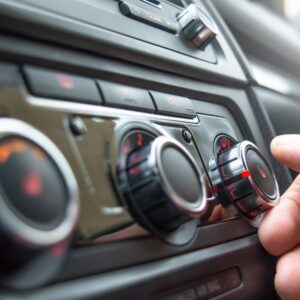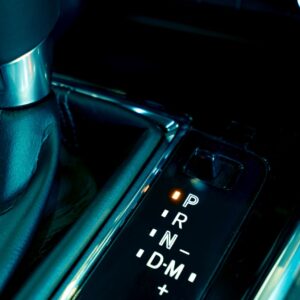Unless you’re a racecar driver testing the limits of your ride, smelling burning rubber from your vehicle is concerning. It could indicate various problems that can get worse if you leave them unresolved. As such, it’s crucial to locate and deal with these issues before they affect your vehicle’s health.
Why Do I Smell Burning Rubber in My Car?
Here are the possible reasons why there’s a smell of rubber burning in your car.
Belt or Hose Coming in Contact With Hot Auto Parts
There are different types of belts and hoses in a car, and the ones under the hood can produce a burning rubber smell when they come loose.
Usually where this is happening, smoke will also be a factor, followed by a leak, either of coolant, oil (spraying out) or air (sucking into the hose).
Because belts and hoses are often made of rubber, the burning smell could indicate a slipping belt due to a problem with a pulley or accessory component. If you think there may be a problem with a component, remove the belt and handle all the pulleys. Turn them by hand to see if they’re rough or have loose bearings.
Overheating Clutch
Pay attention to when you smell burning rubber. If it’s every time you shift gears, it might be often due to an overheating clutch. If this is the case, you’ll typically notice the clutch slipping as well. Remember that riding the clutch can accelerate clutch wear.

Coolant Leaks
Coolant, contains ethylene glycol, which has a sweet maple syrup-like smell when undiluted. However, the odor becomes unpleasant when it leaks and makes contact with hot engine components. What most people don’t know is that leaking coolant can also be a fire hazard in the engine compartment.
Engine Oil Leaks
Similarly, leaking engine oil that spills onto the exhaust manifolds, exhaust pipes, and other hot surfaces burns and evaporates to create a distinct rubber-like odor.
If you see signs of oil leakage on the intake manifold or the exhaust pipes underneath, suspect valve covers, intake gasket leakage (V engines only), oil pan, or rear crankshaft seal. To fix one of these, you have to make sure which one is leaking. You also need to make sure the last oil change was done right. Check the filter and drain plug.
Short-Circuiting Wires
Because electrical wiring is coated in plastic, short circuits and overheating can burn it off. This leads to a rubber-like smell plaguing your car.
The crazy thing about electrical wiring is that a very short piece of wire can blister and burn due to a short and make you think the entire vehicle is on fire under the dash, even if the only wire that is melted is two or three inches long.
Debris in the Engine
The smell of burning rubber often stems from a flammable component touching something hot. As such, you might smell it when the debris that entered the hood made contact with the hot engine. If some burnable object that doesn’t belong under the hood makes its way to the exhaust manifold, you may smell it burning. Plastic grocery bags can do this.
Damaged Tires
An underinflated tire might cause a burning smell, particularly in the summer. Underinflated tires can create a lot more rolling resistance and heat, which can cause your tires to create a burning rubber smell.
If you’ve recently done a burnout, you would expect to smell rubber smoke. If not and you smell tires burning, look for the tire to be rubbing against something while you’re driving.
Sticking Brakes
A compromised brake caliper will heat up and cause a burning smell because it can’t release its hold on the brake pads pushed against the rotor. In severe cases, the heat could also cause smoke or even fire from the wheel.
You’ll usually notice a change in the way the brakes feel and stop the vehicle, or the vehicle may feel like it’s pulling against something that is trying to hold it back if a caliper is stuck. Also, the wheel will get very hot so you can feel it from 3 or 4 feet away when you walk around the car.
Worn Catalytic Converter
A catalytic converter removes pollutants from the car’s engine and converts them into harmless emissions. The converter, even when it’s working right, gets very hot because it needs to in order to work right on the inside. If anything plastic comes in contact with it while you’ve been driving and you’ve stopped at a traffic light or stop sign, you’ll notice a burning smell and may see smoke.
How to Get Rid of Burning Rubber Smell in Car

You can get rid of the burning rubber smell in your car by dealing with the issues above. Typical solutions include the following:
Find Out the Root Cause
First, you’ll need to find out where the smell is coming from if you can. If you can’t determine the source of the smell and you see no smoke or fire, you may need to hire a professional to track it down, but a burning smell should never be ignored. Fires happen.
Replace or Reattach the Displaced Belt or Hose
You can replace the belt or hose yourself if you know your way around your car’s systems. Simply thread it into position, crank the tensioner, and slip the belt over the pulley.
Of course, if it’s damaged, it’s better to replace it to prevent problems down the line.
Replace the Clutch
Replacing the clutch (if it’s the culprit) should get rid of the foul smell. It would also improve your car’s drivability, as you won’t have to deal with shifting issues.
There are a lot of steps involved when changing the clutch. It usually includes unhooking the clutch and positive battery cables and disconnecting the electrical connections and the speedometer cable. Then, you’ll have to unbolt the engine mount before you can replace the clutch.
Check for Coolant Leaks
Check underneath the hood and examine the hoses for leaks. Tighten loose ones or replace them if they’re damaged to ensure the coolant won’t leak again.
Afterward, drive to an auto shop to top up coolant to prevent engine overheating and other problems.
Check for Engine Oil Leaks
Identify the source of the oil leak. One way to do this is by placing a cardboard under the engine and taking note of the spots that get oil.
There are different fixes depending on where the leak is coming from. For example, if it’s due to a loose oil pan, you’ll need to tighten the bolts.
You can also use stop additives to soften the engine gasket and seals to make them more flexible when you plug the hole causing the leaks.
Locate and Deal with Short Circuits
To solve the issue of short circuits, you’ll first have to locate where it originated. Use a multimeter set to continuity mode and touch the black probe to the ground or the electrical circuit’s chassis.
Touch the red probe to the component you want to test and ensure both probes are touching a metal part, like a wire, a component lead, or the circuit board foil.
A multimeter reading zero or close to zero means the component you’re testing has short-circuited. Fixing the short circuit depends on its location:
- You’ll need to replace a fuse or wiring harness if the problem is in the bay.
- Replace a switch or connector if it’s in the cabin.
- Clean the battery terminals or replace the battery if it’s near the battery.
Remove Debris in the Engine
Check under the hood to see if there’s debris that’s interfering with the engine’s moving parts. Remove anything that shouldn’t be there and inspect the engine parts for damage.
Fix or Replace Your Tires
Check your tires for damage and replace them if needed. If they’re producing a burning rubber smell because they’re not properly aligned or inflated, be sure to address the issue as needed.
Replace the Brake Caliper
Replacing the brake caliper when it’s worn usually involves the following steps:
- Step 1: Lift the vehicle and loosen the lug nuts on the tire to remove it.
- Step 2: Use a brake caliper tool to remove the mounting bolts holding the caliper in place, then remove the worn-out caliper.
- Step 3: Place the replacement caliper over the brake rotor along with the bolts.
- Step 4: Install the tire before lowering your vehicle.
- Step 5: Remove any air by bleeding the brake system using a bleeding kip to ensure the brakes work properly.
Talk to a Mechanic
Figuring out where the burning smell is coming from and promptly fixing the issue can be a tricky task. The safest route you can take when dealing with this issue is to talk to a mechanic and have them inspect your vehicle.
Where to Get Replacement Parts for Your Vehicle
The lemon scent of the air freshener and the faint smell of smoke from the exhaust pipe are normal scents you might notice in your car. But if you’re smelling burning rubber from inside the cabin, that’s an entirely different story.
You could be looking at a wide range of issues that could be causing this symptom to pop up, and a careful diagnosis is a must to properly identify the faulty part.
Here at CarParts.com, you’ll find everything you need to replace the part that’s causing the smell (if necessary) and get your vehicle running like it’s brand new. We have engine parts, electrical components, brake parts, and more.
Simply enter your vehicle’s year, make, and model into our vehicle selector to start browsing compatible products for your daily driver. You can also use the search filters to find parts according to your preferences.
On hand and ready to ship, all our products come with a low-price and lifetime replacement guarantee, so you never have to worry about breaking the bank for your repairs. Order now, and we’ll deliver everything you need straight to your doorstep in as fast as two business days.
Take advantage of the best deals on the market, and shop now!
Any information provided on this Website is for informational purposes only and is not intended to replace consultation with a professional mechanic. The accuracy and timeliness of the information may change from the time of publication.

































